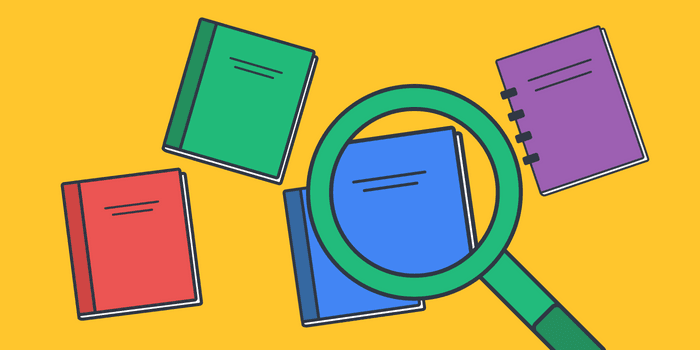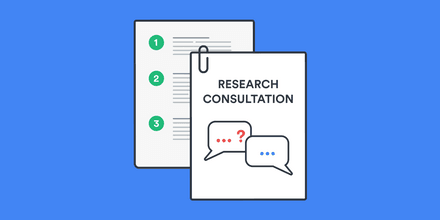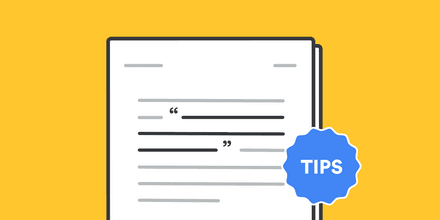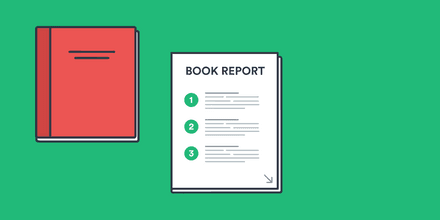
Your school’s library not only maintains the databases that you use to find journal articles. It also contains a range of in-depth scholarly sources that can help you expand your research: books! In this post, we discuss how to find books in your college library.
How are college library books organized?
Most college libraries use the Library of Congress classification system to organize their books. Books are categorized in two primary ways: 1) by specific subject headings that have been agreed upon by expert librarians; and 2) by call numbers that provide specific location information within a library’s collections.
Subject headings
The Library of Congress assigns subject headings to books based on their topics. Books can have more than one subject heading assigned to them. For instance, The Cambridge Companion to Jane Austen, an edited volume with essays about Jane Austen’s life and works, has multiple subject headings:

The first heading is the most specific and identities that the book is about Jane Austen. The second and third subject headings are broader.
“Women and literature” indicates that the book is about a female author and “England—History—19th century” specifies that the title is focused on women and literature in England in the 19th century. The final heading is even broader and focuses on genre. Since Jane Austen wrote fiction, any book about her work will likely carry this genre-specific label.
You can use subject headings to search for books, since any library that uses the Library of Congress system will use the same subject headings.
Call numbers
Each book in your college library also receives a call number that is specific to that book and its place within the collection. These are usually found on the spines of the books.
The letters and numbers that comprise the call number relate to the book’s subject headings, but also indicate the title’s exact place on the shelf. Call numbers should be read from left to right and are arranged firstly by letter (alphabetically) and then by the numbers (going up from one).
For example, here’s the call number for The Cambridge Companion to Jane Austen:

The call number actually starts with two letters: PR. These letters have nothing to do with the title of the book. Rather, they point to the book’s subject, English literature. Any book in your college library that focuses on English literature will have a call number that starts with those letters.
The four numbers that follow the letters also relate to the book’s subject, but provide more specific information about the time period that the book covers and the book’s type. More specifically, those numbers tell us that the book is about a nineteenth-century author, specifically Jane Austen, and that the book is a general, edited volume about Austen’s life and works. That’s a lot in just four numbers!
The period in the call number means that the next part of the sequence will have a different focus: the book’s author or editor. Since the editor of the book is Edward Copeland, the second part of the call number starts with a “C,” the first letter in the editor’s last name. The number following this letter provides more specific information about the editor’s name.
The last part of the call number includes the year that the book was published, in this case 2011.
How do you find books?
You can use your library’s online catalog to find books. Most catalogs allow you to search by keywords, subject headings, authors, titles, ISBNs, etc. If you are unsure about how to use your school’s library catalog, make an appointment with a librarian who can show you how to find books related to your topic or interests.
Books are arranged on the shelves of your library’s stacks by call number. Larger libraries may have multiple floors, so be sure to consult a map or other signage to help you find the right section. Once you find the books you need, you can check them out. Every library has different policies on checkout periods, due dates, fines, etc., so be sure to ask at the circulation desk for more information
How do you cite books?
Whether you are using direct quotes from your sources or simply consulting a book, make sure that you include correct citations in your project. A typical book citation in MLA style uses these elements:
- Author(s) name: Give the last name and first name as presented in the source (e. g. Watson, John). For two authors, reverse only the first name, followed by “and” and the second name in normal order (e. g. Watson, John, and John Watson). For three or more authors, list the first name followed by et al. (e. g. Watson, John, et al.).
- Title of the book: Titles are italicized when independent. If part of a larger source add quotation marks and don’t italicize.
- Publisher: Always use the abbreviated version, e.g: MIT P for MIT Press or Oxford UP for Oxford University Press.
- Year of publication: Give the year of publication as presented in the source.
You can use BibGuru’s citation generator to create accurate bibliographies and in-text citations for your assignment. Always check with your instructor to find out which citation style to use.
Frequently Asked Questions about how to find books in your college library
📔 How do you find books in a college library?
Use your library’s online catalog to search for books on your topic. Once you find a book, write down the book’s call number, which will help you locate it in the library.
📕 What will help you locate a book on the shelf?
A book’s call number will indicate where you can find a book in the stacks of your college library.
📗 How are books arranged in the library?
Most college and university libraries use the Library of Congress classification system to organize their books.
📘 What steps can you take to find help with library resources?
If you need help finding a library resource, or finding specific sources for a research project, make an appointment with a librarian.
📙 What is the best way to search for library books on a given topic?
To search for library books by topic or subject, you can input subject headings into your library’s online catalog. The Library of Congress maintains official subject headings for all published books.


